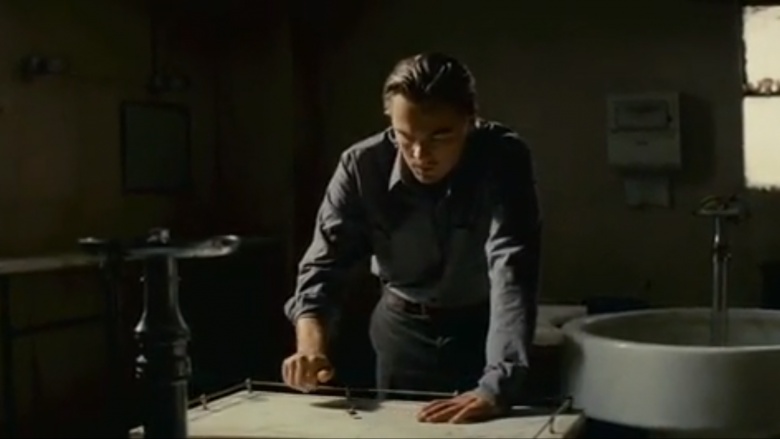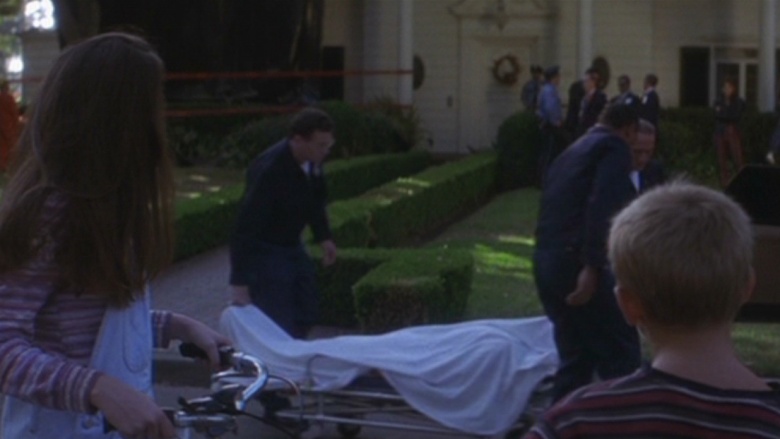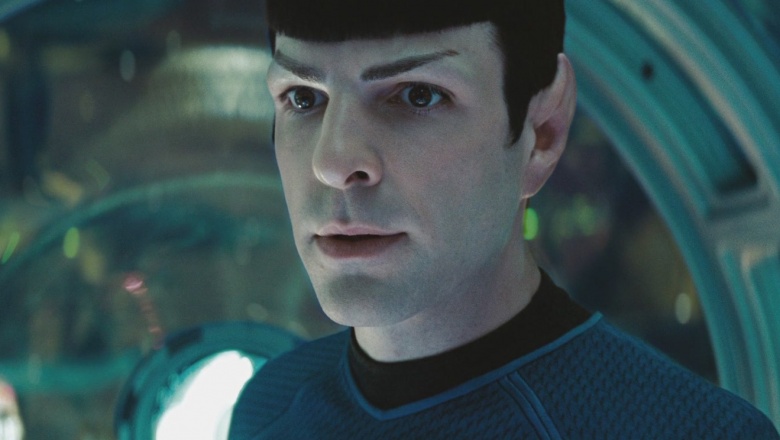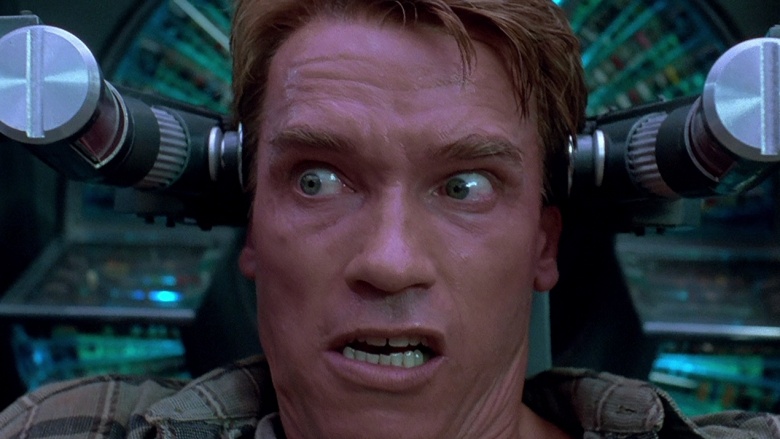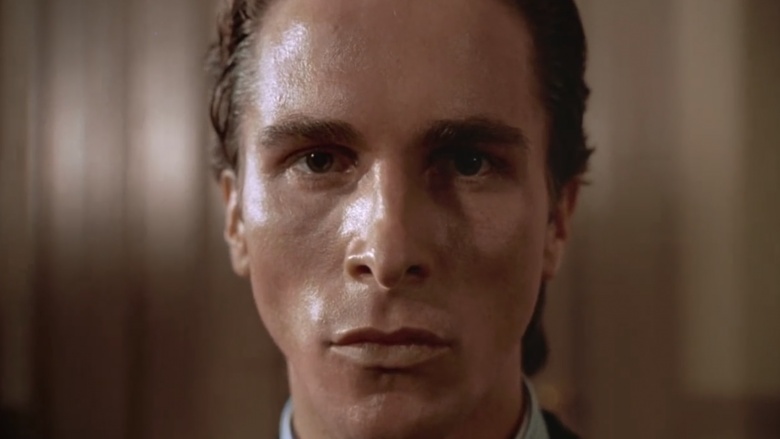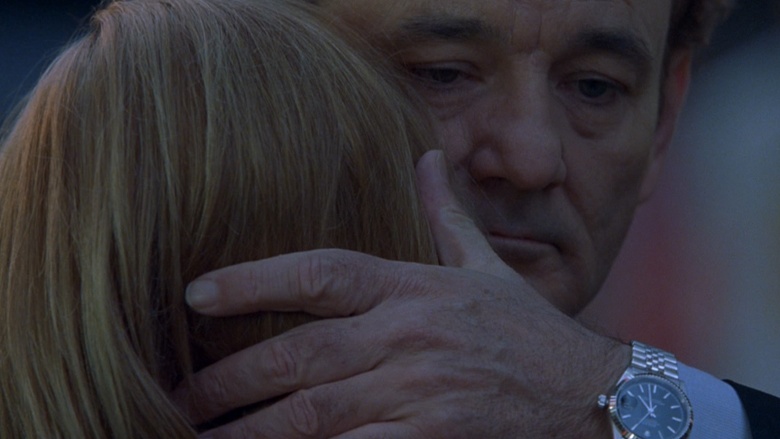Movie Scenes Audiences Completely Misinterpreted
Movies can be hard to understand sometimes. We've all had this experience: you see a movie, think one thing happened, and then everyone tells you you're wrong. Somehow, you've completely misinterpreted a scene or a character's motivation. There are times, however, when we all screw up, and everyone gets the movie wrong. Here are a few scenes that were interpreted differently than what was actually intended.
The spinning top - Inception (2010)
Christopher Nolan blew everyone's minds when he released Inception. The film combined a bank heist with trippy dream logic. Without getting too into the movie's mechanics, all you need to know for this scene is that everyone who's part of the dream team carries a totem. It's an item that only they know, so that if they ever get pulled into someone else's dream, they'll be aware of it because the totem won't be correct. Cobb, played by Leonardo DiCaprio, has a spinning top, and if he's in a dream, then it will spin forever. At the end of the movie, Cobb spins the top, and then walks away before it has a chance to topple. The last shot of the movie is the top, still spinning, although starting to waver. Fans took this to mean that Nolan wanted there to be some mystery as to whether Cobb was living in reality or a dream. As it turns out, we were all over thinking it. The point of the scene isn't about the top, it's that Cobb doesn't care anymore. Nolan revealed in an interview that it's supposed to show that Cobb's learned to accept his reality for whatever it is. If only we could learn to accept this movie for what it is and stop debating the ending.
The jet engine - Donnie Darko (2001)
Look, nobody watched Donnie Darko the first time and understood what they were seeing. Even still, we all missed what happened at the ending. In the movie, it looks like Donnie causes some sort of time portal to open up, sending a crashing jet engine back in time so that it lands on him while he's sleeping, thus killing him and preventing the events of the movie from happening. What really happens involved an alternate universe being created that was going to collapse, which is why the bunny kept saying that the world would end in 28 days. So at the end of the movie, Donnie successfully closes the alternate universe, which saves the main universe. Got all that? You can read all about it in a ton of supplemental writings the director has released, but the point is, he doesn't kill himself to prevent anything. He lets himself die because he's content with life and feels he's closer to God. See, that wasn't so hard to understand, was it?
Spock allowing Nero to die - Star Trek (2009)
During the climax of J.J. Abrams' Star Trek, Spock ignites a black hole inside the villainous Nero's ship. Kirk offers to rescue the survivors, in an attempt to foster peace with the Romulan empire, which Nero is technically a part of. Spock, in a seemingly out of character moment, tells Kirk that he does not agree with the offer, despite it being a logical move. It's easy to assume that Spock is giving in to his human emotions, as Nero had previously destroyed Spock's homeworld, killing Spock's mother in the process. His behavior, however, fits into a Vulcan's philosophy. In the very beginning of the movie, Spock is introduced as a child in the Vulcan school system. One of his first lines is defining the concept of "supererogation," which is when "something is morally praiseworthy but not morally obligatory." Spock wasn't being emotional, but instead had learned to balance his emotions with logic. Fans didn't realize that the later scene was a callback to the earlier one, probably because they weren't paying attention to the lessons being taught in the Vulcan school. That's because people don't go to the movies to also go to class at the same time.
The final shot - Total Recall (1990)
The original Total Recall (you know, the good one), plays with the viewer's perception of reality. Arnold Schwarzenegger plays a man named Douglas Quaid who goes to a place called Rekall to have the memories of a luxury vacation implanted in his head. He decides he wants to experience a secret agent adventure, but then something goes wrong. It turns out that Quaid was really a sleeper agent, and the Rekall process started to reactivate his real memories. Then it's suggested that Quaid is actually just experiencing the adventure he paid for, and that everything is just an illusion in his mind. On the other hand, maybe the Rekall experience really had gone wrong after all. If he doesn't wake up, his brain would be permanently damaged and he'd require a lobotomy. Fans have debated whether or not the story is real or if Quaid is just hallucinating everything, but the director put an answer in the movie. During the final shot, Quaid stands on the mountains of Mars, and there's a bright flash from the sun before the credits roll. According to director Paul Verhoeven, the flash was meant to represent the lobotomy, so what everyone thinks is a happy ending is actually a doctor cutting into a man's brain.
Patrick Bateman's Confession - American Psycho (2000)
One of the most debated movie endings in recent history is the one from American Psycho. The film revolves around Patrick Bateman, played by Christian Bale, who spends his nights committing acts of violence and murder, each one growing more depraved than the last. He narrates his experiences, barely showing any emotion and making statements like, "I simply do not exist." Eventually, he calls his lawyer in the middle of the night and leaves a message confessing to all of his crimes. When he confronts the man in person, however, Bateman can't get his lawyer to believe him. In fact, his lawyer doesn't even recognize him, instead mistaking him for another Wall Street banker. His lawyer also claims to recently have had dinner with one of Bateman's victims. Fans have debated whether or not this means Bateman actually killed anyone. The movie leaves it ambiguous on purpose, however. Based on comments director Mary Harron made during the film's commentary track, the point of this scene isn't to cast doubt on Bateman's murders, but to drive home the point that it doesn't matter. Everyone around him is too self centered, and no one even knows who anyone else is. The purpose of the scene was to say that whatever Bateman is, he's the norm. The movie's pretty much saying that Wall Street is full of psychopaths. And that's something most of us can agree with.
Lost in Translation (2003)
There was a point in time where it was starting to look like Bill Murray's career might have been over. Then he did Lost in Translation and everyone loved him again. The film tells the story of an aging movie star named Bob who's filming a commercial in Tokyo. He meets a young woman named Charlotte, played by Scarlett Johansson, and the two of the form a deep connection. Unfortunately, she's married. The movie ends with the two of them about to leave Tokyo, and each other, when Bob suddenly runs to find Charlotte. When he does, they hug, and he whispers something in her ear before they depart forever. Everyone assumed that this was a romantic ending, but it was meant to be heartbreaking, according to the original script. Bob was going to tell Charlotte that he loved her, but he chickens out and tells her to stay with her husband. If the ending of this movie made you happy, then guess what: you apparently hate love.

